When you have cirrhosis, your liver is scarred. That doesn’t mean cancer is coming-but it does mean you’re at serious risk. Hepatocellular carcinoma (HCC) is the most common type of liver cancer, and more than 80% of cases happen in people with cirrhosis. The good news? If caught early, it can often be cured. The bad news? Most people don’t get screened, and by the time symptoms show up, it’s often too late.
Why Surveillance Matters More Than You Think
Surveillance isn’t just a checkup. It’s your best shot at surviving liver cancer. Studies show that people with cirrhosis who get regular screenings are up to 70% more likely to live five years after diagnosis than those who don’t. Why? Because tumors are found when they’re still small-under 2 cm-and haven’t spread. At that stage, treatments like surgery or ablation can remove or destroy them completely.Without screening, most HCC cases are found when the tumor is already large, the liver is failing, or cancer has spread. Survival drops to under 20%. But with biannual ultrasounds, that number jumps to 50-70%. That’s not a guess. It’s from multiple large studies, including one in Hepatology that tracked over 15,000 patients and found a 37% improvement in overall survival just from regular monitoring.
Who Needs Surveillance?
Not everyone with liver damage needs screening. The guidelines are clear: if you have cirrhosis, you’re in the high-risk group. That includes cirrhosis from hepatitis B or C, alcohol, fatty liver disease, or autoimmune conditions. Even if your liver seems stable, the cancer risk is still there.But here’s where things get more precise. The European Association for the Study of the Liver (EASL) now recommends risk-based screening. That means not all cirrhotic patients get the same plan. Your risk depends on:
- Your age and gender
- Albumin and bilirubin levels
- Platelet count
- Whether you’ve had hepatitis B or C
Some people have a yearly risk below 1.5%-and for them, screening might not be needed. Others, especially those with active hepatitis B or advanced scarring, have a risk over 5% per year. That’s why one-size-fits-all screening is being replaced by smarter, personalized plans.
What Does Surveillance Actually Look Like?
The standard is simple: an ultrasound of the liver every six months. No radiation. No fasting. Just a quick, painless scan. A trained technician looks for lumps, changes in liver texture, or abnormal blood flow. If something looks suspicious-a mass larger than 1 cm-that’s when the next step begins.Many clinics still add a blood test for alpha-fetoprotein (AFP), but it’s not reliable on its own. AFP can be high in cirrhosis even without cancer. It can also be normal in early HCC. So it’s only used as a backup. The real trigger is anything unusual on ultrasound. At that point, you’ll need a contrast-enhanced CT or MRI scan. These show how the tumor takes up dye, which tells doctors if it’s likely HCC.
There’s a new tool making waves: AI-assisted ultrasound. FDA-approved systems like Medtronic’s LiverAssist help detect tiny tumors that humans might miss. In trials, they improved detection by 18-22%. That’s huge when you’re looking for a tumor smaller than a grape.

What Happens If Cancer Is Found?
If imaging confirms HCC, your treatment depends on three things: the size and number of tumors, how well your liver is working, and whether the cancer has spread. The Barcelona Clinic Liver Cancer (BCLC) staging system is used worldwide to guide decisions.Early stage (BCLC 0 or A): Tumors are small, single, and your liver still works well. Options include:
- Surgical removal (hepatectomy)
- Radiofrequency ablation (RFA)-a needle that burns the tumor
- Microwave ablation
- Transplant-if you’re eligible
Transplant is the gold standard for eligible patients. It removes both the cancer and the diseased liver. But you need to be on a waiting list, and not everyone qualifies. In the U.S., the wait can be months to years.
Intermediate stage (BCLC B): Multiple tumors, but no spread. The go-to treatment is transarterial chemoembolization (TACE). A catheter delivers chemo directly into the liver’s main artery, cutting off blood to the tumor. It’s not a cure, but it can shrink tumors and extend life by 2-3 years.
Advanced stage (BCLC C): Cancer has spread to blood vessels or other organs. Systemic treatments are used now: targeted drugs like sorafenib, lenvatinib, or immunotherapy combinations like atezolizumab plus bevacizumab. These don’t cure HCC, but they can slow it down and help you live longer-sometimes over a year.
End-stage (BCLC D): The liver is failing, and the patient is too sick for aggressive treatment. Care focuses on comfort, managing fluid buildup, and preventing infections.
Why So Many People Miss Screening
You’d think with such clear guidelines, everyone would get screened. But here’s the truth: only about 40% of cirrhotic patients in the U.S. actually get the recommended ultrasounds. Why?- Primary care doctors don’t know when to refer
- Patients forget or don’t understand the risk
- There’s no automated reminder in most electronic health records
- Insurance doesn’t always cover follow-up scans
- Some patients fear what the scan might find
Disparities are stark. Black patients and those on Medicaid are half as likely to get screened as white, privately insured patients. In rural areas, access to liver specialists and ultrasound machines is limited. Even in big cities, clinics often lack dedicated staff to track patients and schedule follow-ups.
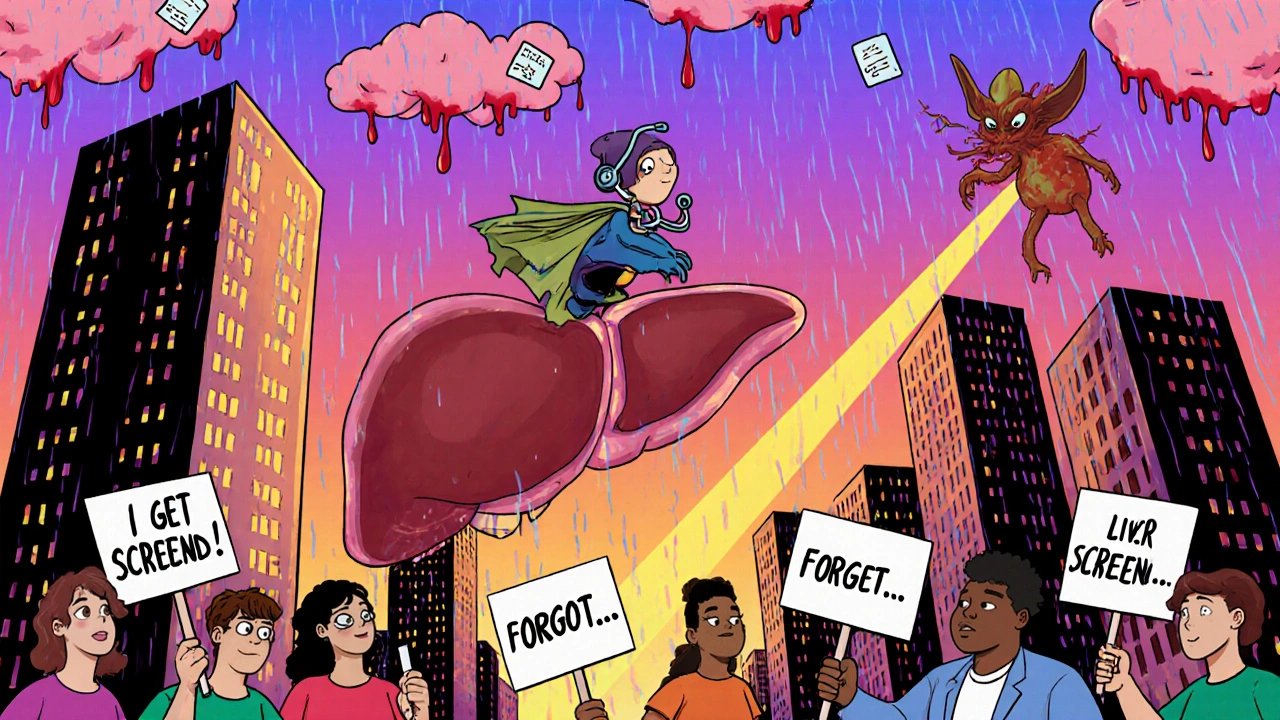
How to Make Surveillance Work for You
If you have cirrhosis, here’s what you can do right now:- Ask your doctor if you’re on a surveillance program. If not, ask why.
- Get your liver function tests (albumin, bilirubin, platelets) checked yearly. These help determine your risk level.
- Request an ultrasound every six months-don’t wait for symptoms.
- If you’re told AFP is high, ask for a follow-up scan. Don’t panic.
- Use a calendar or phone reminder. Missed appointments are one of the biggest reasons screening fails.
- Bring someone with you to appointments. It’s easy to forget details when you’re stressed.
Some hospitals now use patient navigators-trained staff who call you before your scan, help with transportation, and explain results. Ask if your clinic has one.
What’s Coming Next?
The future of HCC screening is moving fast. In 2025, results from the SURVIVE trial will show whether risk-based screening saves more lives than universal screening. New blood tests like the GALAD score-combining five biomarkers-are showing 85% accuracy in spotting early HCC. If approved, they could become part of routine checks alongside ultrasound.Abbreviated MRI scans, taking just 5-7 minutes and costing under $400, are becoming more common for high-risk patients. By 2027, they may replace ultrasound for many. And AI tools are getting smarter-not just detecting tumors, but predicting which ones are most likely to grow.
One thing won’t change: early detection saves lives. The tools are here. The guidelines are clear. The only thing missing is action.
Is hepatocellular carcinoma the same as liver cancer?
Yes, hepatocellular carcinoma (HCC) is the most common type of primary liver cancer, making up 75-85% of all cases. Other types, like cholangiocarcinoma, start in the bile ducts and are rarer. When doctors say "liver cancer," they usually mean HCC, especially in people with cirrhosis.
Can you survive hepatocellular carcinoma?
Absolutely-if caught early. If the tumor is small and the liver still works, treatments like surgery or ablation can cure it. Five-year survival rates jump from under 20% without screening to 50-70% with it. Even in advanced cases, new drugs can extend life by over a year. Survival isn’t guaranteed, but it’s far from impossible.
How often should you get screened for HCC if you have cirrhosis?
Every six months. This is the standard across all major guidelines, including those from the American Association for the Study of Liver Diseases and the European Association for the Study of the Liver. The reason? HCC tumors typically grow 1-2 cm every six months in cirrhotic livers. Screening more often doesn’t help much and costs more. Screening less often misses the window for curative treatment.
Is ultrasound enough, or do I need an MRI?
Ultrasound is the first step-and it’s good enough for most people. If something looks suspicious, you’ll need a contrast CT or MRI to confirm. For high-risk patients (like those with hepatitis B or very high risk scores), some centers now use MRI as the main tool because it’s more accurate. But ultrasound is still the starting point for everyone.
Can non-alcoholic fatty liver disease (NAFLD) lead to HCC?
Yes. While hepatitis B and C were once the main causes, NAFLD is now the fastest-growing reason for HCC in the U.S. and Europe. If NAFLD progresses to cirrhosis, your risk of HCC increases to 1-3% per year. Even without cirrhosis, some studies show a small but real risk, especially if you have diabetes or obesity.
What if I’m on the liver transplant waiting list?
You’ll be screened every 3-6 months, even if you have advanced cirrhosis. Transplant centers require strict surveillance because if HCC grows beyond certain limits while you’re waiting, you may be removed from the list. The Milan criteria (one tumor under 5 cm or up to three under 3 cm) are used to determine transplant eligibility.
Are there blood tests that can replace ultrasounds for HCC screening?
Not yet. AFP alone isn’t reliable enough. New biomarker panels like GALAD and aMAP show promise, with accuracy over 80%, but they’re still being tested in large trials. For now, imaging is required to confirm HCC. Blood tests may one day help decide who needs imaging, but they won’t replace it.
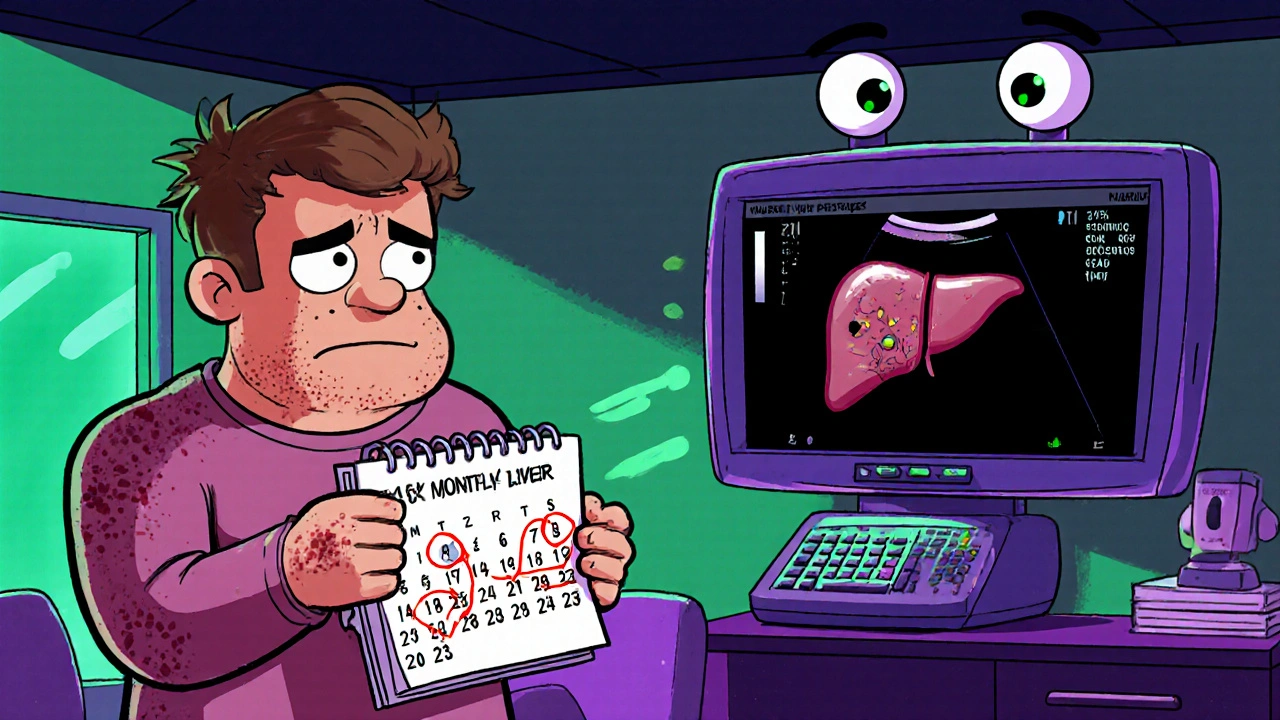
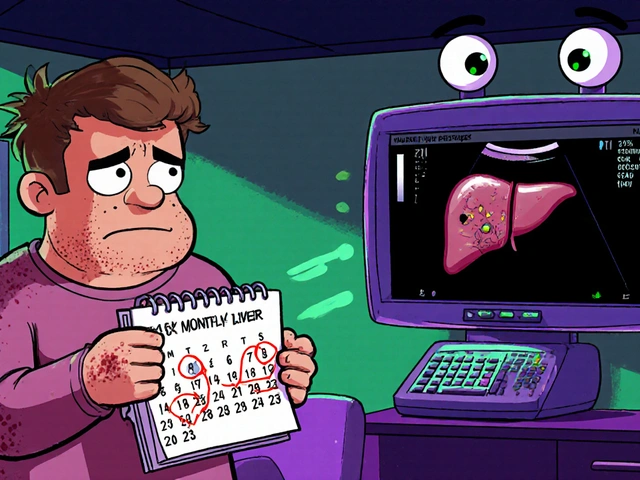

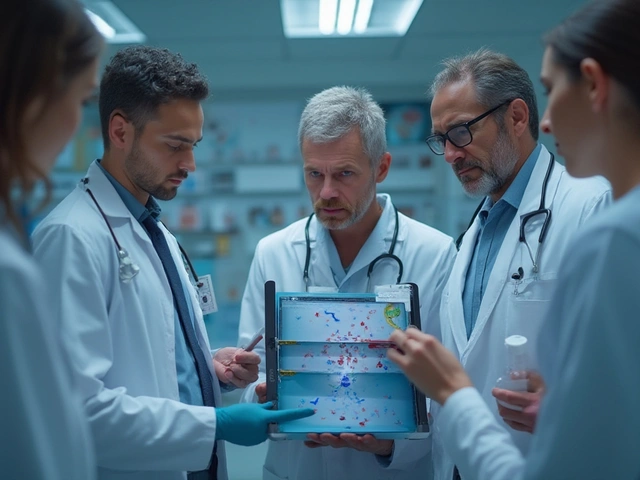
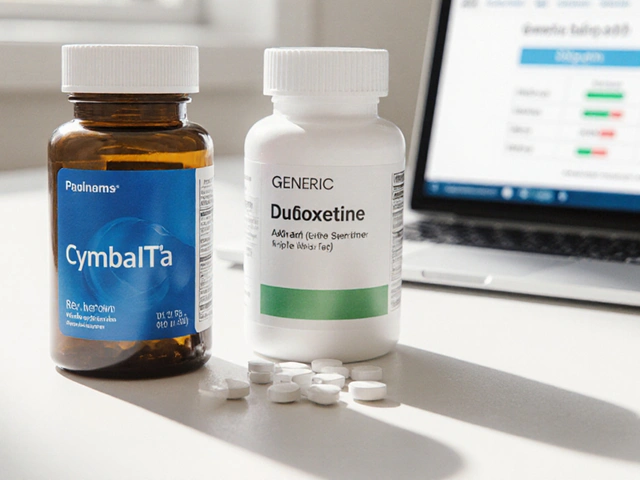
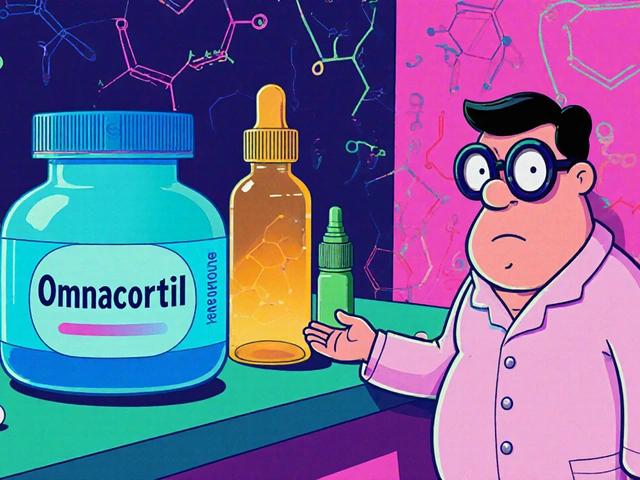
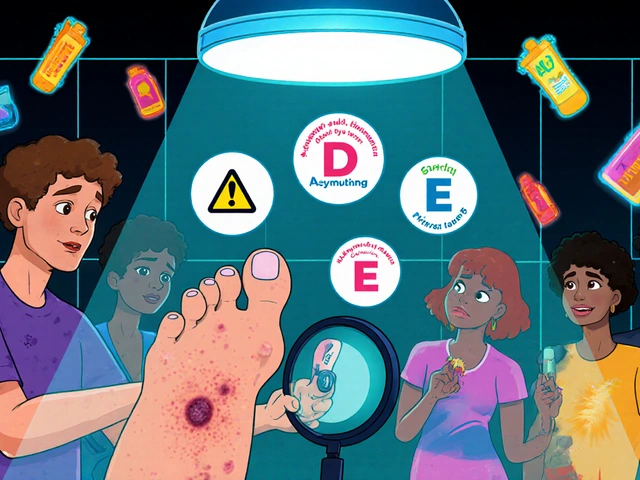
Denny Sucipto
November 17, 2025 AT 21:35This post hit me right in the gut. My dad had cirrhosis from years of drinking, and he never got screened. By the time they found the tumor, it was too late. I wish someone had told us back then what you just laid out here. Don’t wait. Get that ultrasound. Even if you’re scared.
Christine Eslinger
November 17, 2025 AT 22:43Thank you for writing this with such clarity. I’m a nurse in hepatology, and I see the same pattern over and over: patients who knew they had cirrhosis but thought, ‘It’s fine, I feel okay.’ But cancer doesn’t care how you feel. It grows silently. Biannual ultrasounds are cheap, noninvasive, and literally life-saving. If your doctor isn’t pushing this, ask again. And again. Your liver might be scarred-but it’s still fighting for you.
Holly Powell
November 18, 2025 AT 12:13Let’s be honest: the EASL risk stratification model is still underpowered. The variables used-albumin, bilirubin, platelets-are crude proxies. We need longitudinal proteomic profiling, not a 1990s-era algorithm masquerading as precision medicine. And AFP? A relic. The GALAD score is promising, but without validation in diverse cohorts, it’s just statistical theater. Also, AI-assisted ultrasound? Cute. But inter-rater reliability among techs is abysmal in community clinics. Don’t mistake hype for efficacy.
Iska Ede
November 19, 2025 AT 05:41So let me get this straight… we have a cancer that’s 80% preventable with a $100 scan every 6 months, but people are dying because they’re ‘too scared’ or ‘don’t have time’? 😅 Bro. We live in a world where people pay $200 for a 10-minute massage to ‘de-stress’ but won’t spend 20 minutes getting a liver ultrasound. The irony is thicker than ascites fluid.
Shaun Barratt
November 21, 2025 AT 03:04While the article is largely accurate and well-referenced, it should be noted that the 70% survival improvement cited is derived from cohort studies with selection bias-patients who adhere to surveillance are more likely to be health-literate, insured, and engaged with care. The absolute survival benefit in unselected populations may be considerably lower. Additionally, the cost-effectiveness of universal ultrasound versus risk-stratified screening remains debated in low-resource settings.
Gabriella Jayne Bosticco
November 22, 2025 AT 13:14I’m from the UK and we’ve got a similar problem here-GPs don’t always know the guidelines, and NHS wait times for ultrasounds can be months. My mum has NASH cirrhosis and we had to push *hard* to get her on the radar. She’s now on a 6-month schedule and I’m so grateful. If you’re reading this and you have cirrhosis: don’t let bureaucracy win. Write down your questions, bring a notebook, and if they say ‘no,’ ask for a referral to a liver clinic. You’re worth the effort.
Heidi R
November 23, 2025 AT 12:37Why are you telling people to get ultrasounds? Who’s paying for them? Medicaid doesn’t cover it. Medicare has a 30-day gap between screenings. And if you’re uninsured? Good luck. This post reads like a luxury pamphlet for people who can afford to care.
Emanuel Jalba
November 25, 2025 AT 00:19😭 I just got my first ultrasound last week after reading this. I’ve had cirrhosis for 8 years and never got checked. I’m 34. I have a 4-year-old. I almost didn’t make it. 🙏 Thank you. I’m going to tell everyone I know. 🚨 #LiverMatters #DontWait
Sarah Frey
November 26, 2025 AT 04:21Thank you for addressing the disparities in access. As a public health researcher, I can confirm that automated EHR alerts for surveillance, coupled with patient navigators, have increased screening rates by over 40% in safety-net hospitals. These interventions are not expensive, and they are scalable. The barrier is not clinical knowledge-it’s institutional inertia. We must demand system-level change, not just individual vigilance.